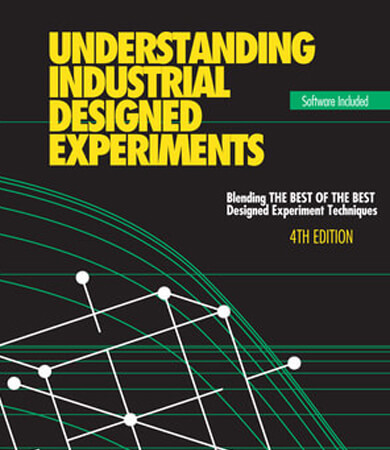
This text is the first to successfully blend Taguchi and Classical techniques of Experimental Design into a new and powerful approach that is proven to yield a high return on investment in the industrial arena. It incorporates traditional topics and creative ways to implement and communicate statistics without mathematical complexity.
This is available in Ebook only. Your email address is required when placing your order for the ebook versions of this title. Upon receipt of an order with an acceptable payment method, SSPG sales staff will forward a page link and login credentials to the provided email address.
Topics include: Full and Fractional Factorials, Plackett-Burman, Taguchi, Box-Behnken, CCD, and Robust Designs; Rules of Thumb for Design Selection, Sample Size, Analysis, and Tests for Confirmation.
There are 279 pages of case studies from a variety of industries. The first two chapters (125 pages) are an excellent overview emphasizing proper planning, variance reduction, modeling, and statistical simplicity. Subsequent chapters provide more depth on design types, such as objectives and advantages/disadvantages. Analysis strategies include simple graphs, normal probability plots, ANOVA, regression, and response surface methods to optimize the average response and minimize variation.
Additional supporting materials:
Solutions Manual: $35.00
Participant’s Guide: * Call for purchase eligibility information and price.
Instructor’s Notebook: * Call for purchase eligibility information and price.
* Student Participant Guides and Instructor Notebooks are available only to instructors certified by Air Academy Associates. Contact Air Academy Associates at 1 800 748-1277 for eligibility details.


